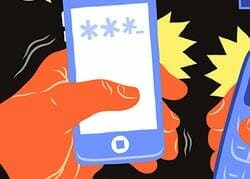A predictive dialer is a system that is programmed to dial multiple phone numbers at the same time, and is used by many businesses for things like telemarketing, appointment reminders and follow up calls. Predictive dialers increase call center agent efficiency by automatically recognizing things like busy signals, voicemails, and disconnected numbers and following the appropriate disposition.
For example, a user may set disconnected numbers to be automatically purged from the database. If a prospect’s voicemail is reached, the system may keep the line open to drop a voicemail message while simultaneously dialing the next number on the list. Keep reading to learn more about the predictive dialing software.
[html]
<img title=”Predictive Dialing Infographic” alt=”Predictive Dialing Infographic” src=”https://www.specialtyansweringservice.net/wp-content/uploads/predictive-dialing-infogaphic.jpg” width=”710″ />
<pre><em>Image originally posted on <a href=”https://www.specialtyansweringservice.net/learn-predictive-dialing-infographic/”>The SAS Blog</a></em>
[/html]
What is a Predictive Dialer?
A predictive dialer is a computerized system that is programmed to dial multiple telephone numbers simultaneously.
- Dialers can be hardware-based or software-based.
- The dialer dials calls to numbers listed in a database.
- The call is connected to an agent only when there is a live human response.
- If the number is busy, no answer, or out of service, the system will discard or reschedule the call.
- Most predictive dialers record the response received from each number dialed for later analysis.
- Time saved using predictive dialers directly translates to higher revenues and reduced costs.
- Selling to customers using automated systems increases agent productivity.
Types of Dialers
Dialers can be classified into five basic types:
- Preview Dialer: Provides account information and potential customer’s phone number on agent’s PC screen. The agent can then decide whether or not to manually dial the number.
- Power Dialer: A bulk dialer service that uses a list of numbers to place calls on outgoing phone lines, and connects calls only if they receive a live “hello” response. If all agents are busy when a live “hello” response is received, the dialer abandons the call or plays a pre-recorded message.
- Anticipatory Dialer: Uses statistical methods to anticipate when an agent is likely to be free, then dials the number. A major flaw with this method is that one unexpectedly long call can result in a spiral of abandoned calls.
- Progressive Dialer: Will dial a number only after making sure than an agent is available to answer the call. This method is typically less productive than a power dialer.
- Predictive Dialer: The most advanced and sophisticated outbound calling method.
The key differentiating factor between different dialers is the time savings that each one can provide. For example:
- In manual dialing, time spent on the actual call is only 15 to 20 minutes per hour.
- Power dialers enhance productivity to about 30 minutes per hour.
- With predictive dialers, agents can achieve productivity as high as 57 minutes per hour.
How Does a Predictive Dialer Work?
Predictive dialing works on the principle of “dialing ahead.” A typical dialer will dial twice as many calls as the number of agents connected to the system. Complex algorithms are used to predict the probability of getting a live “hello” as a response. Call patterns are automatically adjusted based on 5 factors:
- Percentage of dialed calls that are answered by a live human.
- Average talk time. The shorter the phone call, the faster agents will be free.
- Number of agents logged on. The more agents connected, the greater the dialing frequency.
- Average number of rings before a call is answered.
- Acceptable abandonment rate. When a live person answers the call, but hangs up before the dialer transfers the call to a live agent.
The main advantage of a predictive dialer is that it helps to minimize manual dialing delays, increasing agent utilization to as high as 95%.
Technology
Predictive dialers fall into two categories:
- Hard dialers: Stand alone hardware devices.
- Soft dialers: Software-based dialing algorithms integrated with existing contact center software.
Add-On Features of Predictive Dialers
The most popular predictive dialers in the market today offer several add-on features:
- They interface with do-not-call lists and cell phone suppression services.
- They perform skills-based routing.
- They offer answering machine detection to recognize answering machines and voicemail.
- They have the ability to display sales scripts and customer information on agents’ monitors when the call is transferred.
- The have the ability to conference between multiple parties.
- They interface with digital voice recording to enable recording of live calls.
Benefits of Predictive Dialers
Predictive dialers offer several benefits to a contact center, such as:
- Better management of client information.
- Improves sales-per-hour per agent.
- Saves agent time and improves productivity.
- Aids regulatory compliance comparing numbers against the Do Not Call registry before calling.
- Easy integration with other software and hardware devices.
Practical Applications
- Contact centers or businesses that make a high number of continuous outbound calls
- Appointment scheduling
- Market research
- Reminders and notifications
- Collections
- Surveys and opinion polls
- Customer service calls
- B2B and B2C telemarketing
Tracking Key Performance Indicators (KPIs) with a predictive dialer will help contact centers continuously improve telemarketing efforts through:
- Right party connect times
- No-connect data
- Talk times
Conclusion
A predictive dialer is an ideal tool for any business that needs to call a large number of customers within a short time span. The predictive dialer eliminates all forms of live agent productivity lags by ensuring that agent’s don’t waste time on the tedious process of dialing a number. Greater productivity helps businesses remain competitive by increasing sales and customer reach!
